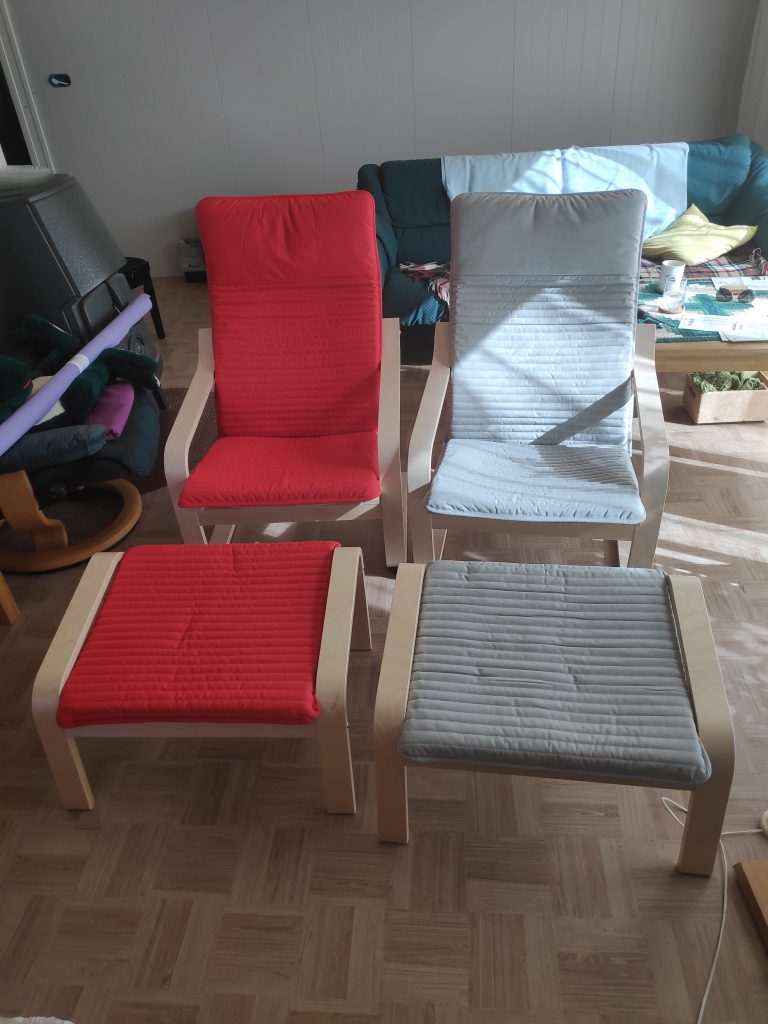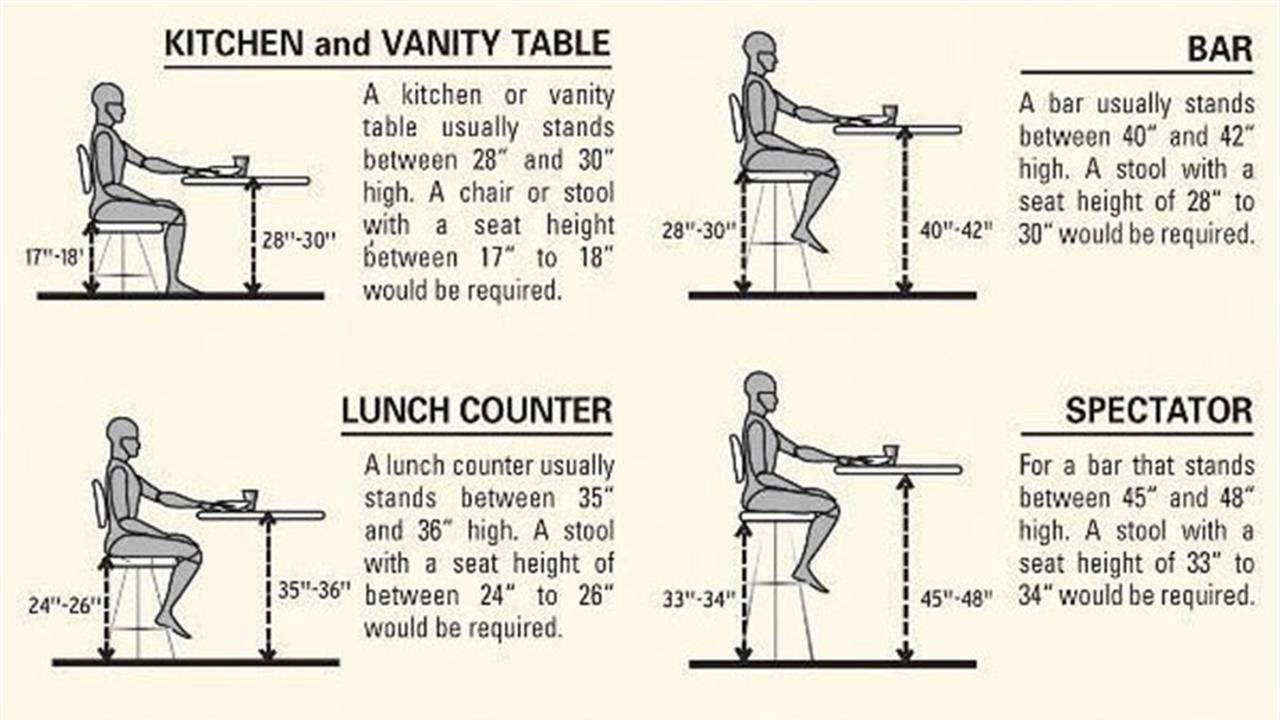
Back in 1978, newly wed Patricia and Brock wanted to buy furniture for their New Westminster apartment. Despite Ikea opening its first store in Canada in 1976 in nearby Richmond, we decided not to buy two arm chairs and a three-seater sofa there or from any of the other assortment of furniture palaces, emporiums or warehouses to be found in Greater Vancouver. Instead, we found a small, custom furniture workshop on Hastings Street, in Vancouver, and a man who could make furniture to order, or at least to his fairly unique, minimalist design. The result was no more expensive than the equivalent to be found at Ikea.
In 2019, not so young Patricia and Brock are contemplating acquiring replacement furniture for their living room. They have only had their current sofa set for about eleven years, but it is showing its age. The set was about twenty years old, when it was purchased used for about 10% of its new price. We never actually owned new living room chairs or sofas in Norway, until May 2019, when on impulse we purchased two Poäng chairs, from Ikea in Trondheim. These chairs cost about NOK 800 (USD 93) each, while the footstools cost about NOK 500 (USD 58) each. Further information about the Poäng can be found here.
Our standard living room chair purchase is a used high-backed Siesta chair, and we would pay about NOK 500 for each of them. This chair was designed by Ingmar Relling in 1965. These are becoming harder to find, at least used, and people are wanting to sell them not so much as inexpensive seating, but as examples of exclusive mid twentieth century Scandinavian furniture. Of the four we have purchased in the past, two have been given away to people who had a pressing and immediate need for furniture, while the other two have been relocated to another room in our house. The new price of our version of Siesta chairs is NOK 14 900 (USD 1 700) each. Even the footstool costs NOK 6 250 (USD 700). See here.
One of the advantages of living in a well regulated society, is the ample availability of statistics. There is a population register that records the official addresses of everyone in the country. SSB (Statistisk sentralbyrå = Statistics Norway) is able to report that the population of Inderøy was 6 804 at the beginning of 2019. Incomes and deductible expenses are public knowledge, as are many other statistics about people and their spending habits.
From the collected statistical information and other data, SIFO (Statens Institutt for Forbruksforskning = State Institute for Consumer Research) annually constructs a reference budget, which uses empirical data to show how families spend their income. A standard family consisting of 4 people spends NOK 620 each month on furniture. Almost the entire furniture budget for a year would be needed to buy a single Siesta footstool. It takes almost three years of this family’s furniture budget to buy a single Siesta chair with footstool. In other words, this type of product is beyond the economic capacity of most families, at least if it is to be purchased new.
If we combine this information with the reference budget, showing spending on furniture at NOK 155 per person per month, it means that the municipal population is spending about NOK 1 054 620 a month, or slightly over NOK 12 million a year. This is not a huge amount, and probably explains why there are no furniture stores in Inderøy.
Both the Siesta and the Poäng chairs use laminated wood as the foundation of their design. These chairs are light weight, flexible and springy, and extremely comfortable. I suspect the Poäng chair is less robust than the Siesta chair. Peter Opsvik’s Tripp Trapp children’s chair is yet another example of one using laminated wood. While I would enjoy experimenting with laminated wood in my workshop, it requires more sophisticated equipment than I have at the moment, and time to experiment, at least initially. This is not quite the time, as other higher priority projects require my attention.
Instead, I will find the time in 2020 to make a simple, three seater sofa designed specifically to accommodate people who have short upper legs. Most contemporary sofas have an excessive seating depth, that make it uncomfortable for people with short upper legs to sit. In addition, it will also be designed to fit people with short lower legs. This will be done by making the height at front edge of the cushion lower. The budget for the three-seater sofa is NOK 4 000 (USD 465).
Other adjustments may also be necessary, so my first priority is to make an plywood seating mule, where all seating dimensions can be adjusted to find the most comfortable and appropriate seating for any given person. The budget for the seating mule is NOK 1 000 (USD 116).
An aside: My suspicion is that sofas are not designed for not so much for sitting, as for snoozing, and that this is the reason why the seating depth has increased.
Opinion 1. There is no reason why residents of Macomb, Michigan or Prince Rupert, British Columbia or Charlottenberg, Sweden or anywhere else should have to rely on (large) corporations to provide themselves and their families with furniture.
Opinion 2. There is no reason why underemployed residents anywhere should have to remain underemployed, when such a large percentage of their nearby population are regularly buying furniture, and enriching large corporations, with head offices far away, such as in Conshohocken, Pennsylvania (Ikea’s USA headquarters), Burlington, Ontario (Ikea’s Canada headquarters), Delft, Netherlands (Ikea’s World headquarters).
Ikea is a franchised brand and the owner of the brand is different from its operators, so there are several head officices. The Ikea brand name is owned by the company Inter Ikea Group, they are the franchisor of the Ikea concept and is located in Delft in The Netherlands. The various Ikea stores are operated by different retailers. Ingka Group operates about 330 of the 420 stores. It is located in Leiden in The Netherlands.
Opinion 3. To retain a larger proportion of income in a local community, that would otherwise go to is to large corporations, one can start a furniture workshop with separate facilities for wood and textile work, train people in the skills needed to make furniture for themselves and/or for others, and suitable furniture designs. It should also be a place where furniture can be refurbished.


